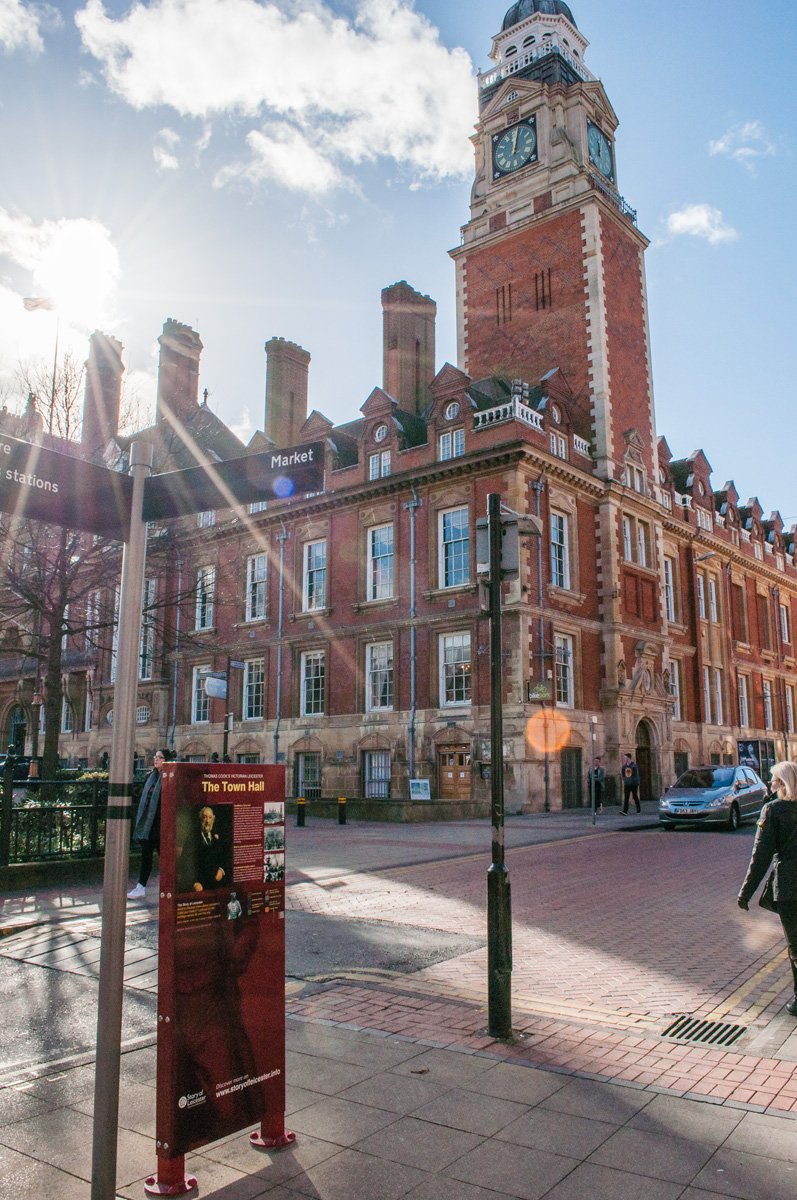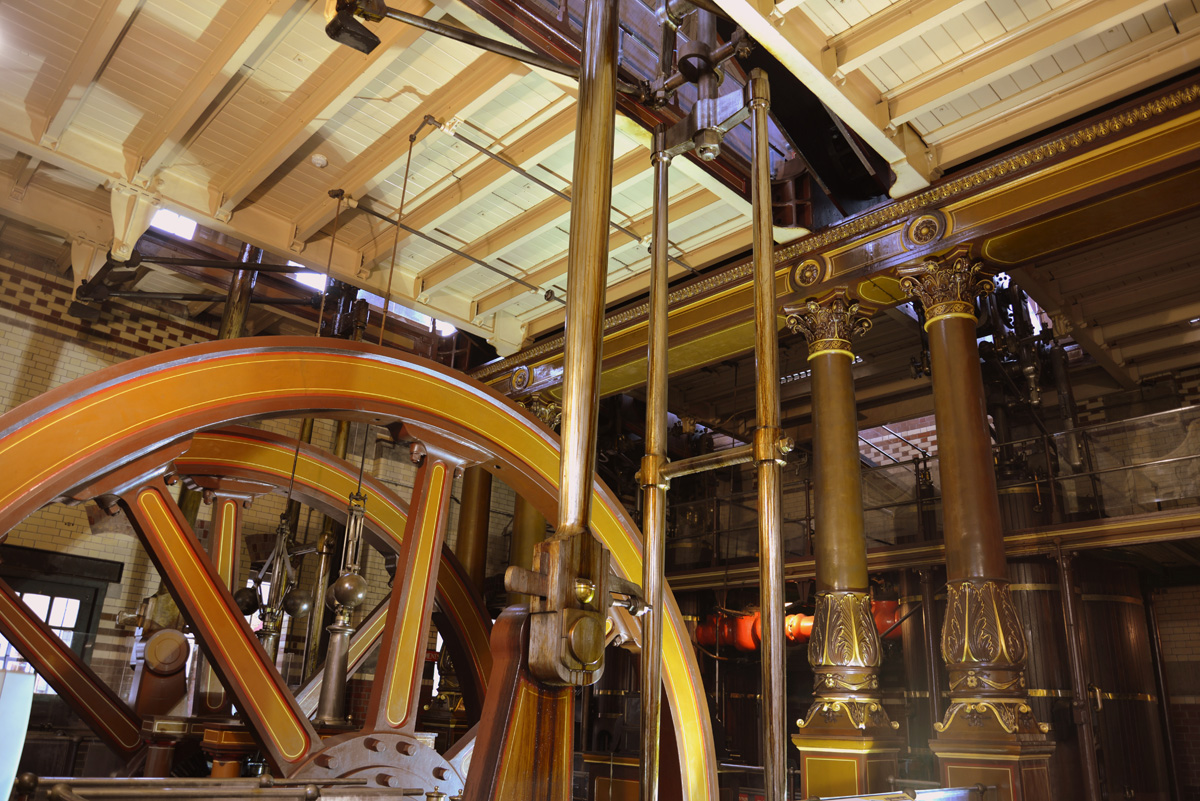Changing Cities
By 1851 more people lived in towns than in the countryside in Britain. Leicester's population expanded by 40% during the 1860s from 68,000 to 95,000.

Leicester Town Hall in 2015
To accommodate the population growth in towns, new houses were built. The middle classes moved to new suburbs, such as South Highfields in Leicester, while the working classes were crowded into houses that were tightly packed together, creating an unhealthy environment.
Civic pride
The growing economic power of Britain during the eighteenth and nineteenth centuries created vast wealth. Expansion of the domestic economy, export growth and returns on worldwide investments generated surplus money for individuals and organisations. In many towns and cities across Britain money was invested in large civic buildings and facilities intended to impress and display status.
Town halls, towers and toilets
The wealth acquired by Leicester from the knitting industry was used to fund a new town hall. The area once occupied by the town's cattle market was cleared to make way in 1876 for a grand Queen Anne style red-brick and cream stone building. A new square was laid out in front of the hall, complete with a bronze fountain. The square became home to Leicester's memorial to the dead of the Boer War. A few hundred metres away at the junction of the High Street and Gallowtree Gate, a grand clock tower with pink granite and marble columns was built. The tower provides a focal point for the city and incorporates statues of famous Leicester residents, Simon de Montfort, William Wigston, Sir Thomas White, and Alderman Gabriel Newton.
Expenditure on grand buildings did not just include sites at the centre of a town or city, money was also spent on unseen functional buildings. Large quantities of waste created in the towns had to be taken away from urban areas via networks of sewers. In 1891 Leicester built Abbey Pumping Station some two miles out of the centre, to pump sewage from the town to Beaumont Leys. The Pumping Station (now a museum) housed four huge, ornately decorated, Gimson and Co. beam engines in a room with elaborate Corinthian columns. Such buildings were built in towns to overcome the health problems caused by population growth.

Abbey Pumping Station beam engines built by Gimson and Co.
Marketing the city
In Nottingham, a late example of civic pride is the Council House, completed in 1929. Built on the site of the former Exchange Building, the structure was designed to dominate the landscape and match the impact of the castle on the skyline. A grand columned facade and dome of Portland Stone could be viewed across the newly laid out Great Market Place with its broad pavements, lawns and fountains.
Gifts to the town
Civic developments were not always funded by public money. The first public park in Britain (Derby Arboretum) was donated by the Strutt family to the town of Derby. The Strutts made their fortune in the hosiery industry following Jedediah Strutt's patent for Derby rib stockings (1758) and partnership at Belper with Sir Richard Arkwright.